SPRINGONE 2GX 2012: THE SPRING, GROOVY, GRAILS, & CLOUD EVENT OF THE YEAR!
SpringOne - Session Descriptions
Sessions
We are busy planning a great event. The following are sessions that have been confirmed. More schedule details will be published soon.
Scott Andrews - Software Engineer
Architecture of a modern web app
No longer are servers the exclusive holder of smarts, and clients dumb terminals. Modern application leverage the strengths of both the client and server to accomplish their tasks. No longer can a client side developer ignore the server, nor a server side developer ignore the client.
Chris Beams - Spring Framework Committer
Introduction to WebSockets
The WebSockets technology promises to fill a niche in web applications by enabling browsers and servers to exchange messages with high frequency, low latency and low bandwith requirements in full duplex mode. The WebSocket protocol is an IETF standard, the WebSocket API is almost standardized by the W3C, and the JSR-356 will deliver a Java API in Java EE 7. There are already implementations in node.js and in a number of Servlet containers and Java frameworks. The time is as good as ever to start digging into it and there is so much to consider — from getting familiar with the protocol and the API, to sorting through the choices on the browser and on the server side, practical challenges with browser support and network issues, and so on. Furthermore, WebSockets offer a messaging-style architecture that's in sharp contrast to the RESTful architectures that connect the web today, so learning where to draw the line will be essential.
Emad Benjamin - Staff Solutions Architect, VMware
Virtualizing and Tuning Large Scale Java Applications
This session shares many of the production proven methods of running Java on vSphere. Covering how to size JVMs, and VMs for large scale deployments. The session will have a special section on GC tuning and show how a wide range of JVMs can be tuned using a GC recipe developed over the past 15 years of actual field experience in tuning JVMs.
Marius Bogoevici - Senior Software Engineer, Red Hat
Java EE Services for Spring Applications
The continuous evolution of both the Spring Framework and the Java EE platform presents us with new challenges and opportunities for collaboration. Several recent EE services are very commonly used with Spring, e.g. Servlet 3.0, JPA 2.0 and Bean Validation. This session presents an up-to-date analysis: How do recent Spring versions (3.1/3.2) integrate with Java EE 6? How is this going to be affected by Java EE 7 in a year's time?
Stephen Bohlen - Senior Software Engineer, VMware
An introduction to Spring.NET for Java developers
In this session you will learn the basics of getting started using Spring on .NET. All your friendly features will be there to great you: dependency injection, AOP, declarative transaction management, web framework, ORM, and messaging middleware integration, but with a .NET twist. Come and see how you can use your existing Spring Java skills to develop easily testable POCO based .NET applications
Sam Brannen - Senior Software Consultant, Swiftmind
Testing Web Applications with Spring 3.2
This year Sam Brannen and Rossen Stoyanchev are excited to present new developments in Spring 3.2 which include comprehensive support for testing web applications and context hierarchies with the Spring TestContext Framework as well as comprehensive support for out-of-container Spring MVC tests.
Jon Brisbin - SpringSource R&D
Spring Data REST: Easily export JPA entities directly to the web
The Spring Data REST project is a library for exposing Spring Data Repositories via the web. Version 1.0 supports JPA Repositories and upcoming versions will support other Spring Data Repository implementations like MongoDB and GemFire. This talk will walk you through the process of exposing JPA entities via the Spring Data Repository abstraction and then exporting them to HTTP using Spring Data REST.
Edward Callahan -
Spring for Dummies: Enabling Business Developers
As users become more tech-savvy their ability and desire to build their own applications grows. Gartner predicts that by 2014, business developers will build at least 25% of new business applications. Commonly these applications must access and update corporate data sources.
Increasingly business developers want to deliver mobile solutions. Gone are the days of under the desk Access, Notes and Excel applications. IT needs to enable, manage, and control these applications to ensure standards for security, reliability, and maintainability.
This session will describe the kinds of people who should build applications and the types of applications they can build. We'll demonstrate using real world examples, integrating database and web services. We will build a Dojo and Spring application from scratch. From which, we will build a native iOS and Android app using PhoneGap.
Brian Cavalier - Front-End Engineer and Open Source Fanatic
IOC + Javascript
Thicker web clients and server-side JavaScript create complexity that must be managed through architectural patterns. JavaScript hasn't yet embraced lessons learned from other platforms, like Java+Spring. Existing JavaScript MVC frameworks are too rigid and lack sufficient architectural plumbing. Javascript needs flexible architectural infrastructure for building bigger, better apps.
Roy Clarkson - Senior Software Engineer at VMware
Extending Spring MVC with Spring Mobile and JavaScript
The modern web no longer is limited to desktop browsers. Smart phones and tablets have become an integral part of our daily lives. Web sites that may look good on a 22" monitor usually do not format and display well on a much smaller screen. Additionally, network speeds can limit the performance of a web site on mobile devices. Because of these reasons many developers and organizations are considering how to make their web sites accessible to all the various devices and screen sizes for which people are using. In this session, we will explore the functionality provided within the Spring Mobile project, and how you can use it to extend your Spring MVC application onto mobile and tablet devices. We'll then continue the discussion by demonstrating how you can leverage some of the popular mobile JavaScript frameworks in combination with Spring Mobile to provide a first class experience for your users on mobile devices.
Spring Project Infrastructure
Over the last year a number of significant changes have been made to the infrastructure and processes used within the Spring family of projects. In this presentation we will review these process changes and provide valuable insights into the tools that make it all possible. We will begin with providing a brief history, then move on to discuss the new tools being used, such as GitHub, Gradle, and Artifactory. Beyond describing the tools, we'll also illustrate how these new tools help facilitate our processes, including community contributions, release management, defect tracking, and more. Ultimately, this presentation will paint a larger picture of the development process for open source projects at Spring, and the various outlets available for community involvement.
Andy Clement - Staff Engineer with SpringSource
Tooling for the JavaScript Era
More and more applications are being built with JavaScript, and not only for the client side but also utilising JavaScript server side. As the complexity of JavaScript applications increases there is a need for the tools to improve – textmate isn’t necessarily the answer! The user shouldn’t need to lower their expectations when stepping out of amazing Java tools and tackling JavaScript development. In this session we will present our vision for tooling for the JavaScript era and demo some early versions and prototypes of what we think the next generation JavaScript tools could look like.
What's new with tooling for Spring, Grails and the Cloud
In this talk we will give an overview of the recently open-sourced and newly organized tooling landscape for Spring, Groovy/Grails and Cloud Foundry (we’ll touch on Gradle too). We will introduce the new open-sourced tooling projects and how they fit together to form our new distributions: the Spring Tool Suite and the Groovy/Grails Tool Suite. In addition to that we will demo the latest feature additions to the tools that enable you to be even more productive.
The first part of this talk will focus on Spring whilst the second part focuses on Groovy/Grails. Attend one (or both!) parts of the session.
Benjamin Corrie - Staff Engineer in Java Performance
Ten Great Reasons to Virtualize Your Java Apps
Customer interest in virtualizing Java workloads has been growing exponentially year on year. For the last few years, the focus has been largely around looking for best practice guidance to mitigate concerns around virtualizing Java workloads, particularly in the area of performance. Since joining VMware, SpringSource has been investing in providing first class support for the Java runtime on vSphere with products such as EM4J. Combined with the industry-leading capabilities of the vSphere platform and the growing product portfolio around the Java ecosystem, there are many great reasons to virtualize Java.
Ellery Crane - Senior Java Developer at Dealer.com
Building an Enterprise CRM with Grails and Spring Integration
This session will present a case study focusing on the development of a robust, horizontally scalable, enterprise CRM system at Dealer.com built primarily upon a Spring technology stack. Using a foundation of Groovy, Grails, and Spring Integration, our application has also incorporated elements of Spring AMQP, Spring Data, and a highly customized extension of Spring MVC's validation layer. In addition to these Spring staples, we've incorporated the cutting edge of other web application technology, such as MongoDB, ElasticSearch, and RabbitMQ. Furthermore, our CRM has been developed as part of a company-wide software platform powered by Grails and Spring Security.
Damien Dallimore - Developer Evangelist, Splunk
Splunk as a Big Data Platform for Developers
Splunk is a Big Data platform that transforms the massive amount of heterogeneous and often totally unstructured machine data being generated across the enterprise into valuable insights and realtime operational intelligence.
Splunk exposes a rich REST API that covers every feature in the product, and we have several language SDKS to enable developers to leverage the power of the Splunk platform.
In this session I'll demonstrate how developers can use the Splunk Java SDK to :
1) easily and rapidly create big data applications without the need to write Map Reduce jobs
2) integrate Splunk search results with your existing applications
3) augment the operational visibility of the JVM apps you are building via the variety of data sources you can send to Splunk
4) use Splunk as a powerful tool throughout your development process to enhance the quality of the software you are pushing into production
Manuel David - Consulting Architect, VMware
Case Study: Provisioning a Multi-Site In-Memory Database
In this session we will analyze the architecture and optimization for creating a multi-site in-memory database that provides high availability for a prominent consumer service . The session will cover the use of Spring Gemfire to significantly simplify deployment in a Gemfire cluster connected together using a WAN gateway . The same approach can be used to solve other high availability, low latency problems.
John Davies - CTO and Co-Founder of Incept5
Spring Integration in the Wild
Few companies have been quite at the forefront of implementing Spring Integration (Batch & Data etc.) as Incept5, this year's VMWare EMEA cloud partner. John will cover a few of the more interesting implementations from an architectural point of view, looking at the choices, the reasoning, design and some of the issues behind the implementations. From projects with no SI skills ramping up to teams of several dozen programmers to experienced teams just looking for training, best practices and better data services integration.
Brian Dussault - Staff Engineer, VMware
Automated Provisioning of Spring Apps to EC2 & VMware vCloud
This session will focus on deploying and managing your Spring Application in the cloud using VMware vFabric Application Director. A series of Spring applications, increasing in complexity, will be deployed. The deployments will cover generating property files and activating Spring profiles. Some other highlights of the presentation will be deploying to VMWare vCloud & EC2, updating an existing deployment, and some general tips & tricks.
The session will begin by using a simple contact application to be deployed as a standalone webapp with an in memory DB on single node, then it will continue with a more advanced example using PostgreSQL DB on a separate node, and finally demonstrate the use and configuration of an external DB & an Apache proxy. The session will conclude with the deployment and discussion of Nanotrader, a sample trading application, with complex requirements.
Emil Eifrem - CEO, Neo4J Technologies
Addressing the Big Data Challenge with a Graph
Graphs are everywhere. From websites adding social capabilities to Telcos providing personalized customer services, to innovative bioinformatics research, organizations are adopting graph databases as the best way to model and query connected data. If you can whiteboard, you can model your domain in a graph database.
In this session Emil Eifrem provides a close look at the graph model and offers best use cases for effective, cost-efficient data storage and accessibility.
Take Aways: Understand the model of a graph database and how it compares to document and relational databases Understand why graph databases are best suited for the storage, mapping and querying of connected data
Emil's presentation will be followed by a Hands-on Guide to Spring Data Neo4j. Spring Data Neo4j provides straightforward object persistence into the Neo4j graph database. Conceived by Rod Johnson and Neo Technology CEO Emil Eifrem, it is the founding project of the Spring Data effort. The library leverages a tight integration with the Spring Framework and the Spring Data infrastructure. Besides the easy to use object graph mapping it offers the powerful graph manipulation and query capabilities of Neo4j with a convenient API.
The talk introduces the different aspects of Spring Data Neo4j and shows applications in several example domains.
During the session we walk through the creation of a engaging sample application that starts with the setup and annotating the domain objects. We see the usage of Neo4jTemplate and the powerful repository abstraction. After deploying the application to a cloud PaaS we execute some interesting query use-cases on the collected data.
Andrew Elmore - Head of Development at C24
Building for Performance with Spring Integration & Spring Batch
Spring Integration & Spring Batch greatly simplify the process of developing enterprise integration architectures and messaging systems. This session covers architectural patterns and real world examples showing how comprehensive the capabilities of Spring Integration & Batch are, while being lightweight enough to be suitable for very high performance environments.
Lee Faus - Founding Partner, Cloud Nine Partners
Extreme Makeover - Application Edition
In this episode we look at an old worn out application that has migrated from 3 different teams and 15 team lead changes. The poor application is now showing its years and doesn't perform like it did when it was first architected. Now through the help of a new platform, this application has an opportunity to shine again. Taking a look at past projects that have gone through similar transformations we will look at patterns and processes that can be leveraged to redesign traditional JEE applications into lightweight applications using Spring, CXF, SpringMVC, and SOA. Finally, we will walk through code examples to show how quickly applications can be developed using this new stack.
Mark Fisher - Spring Integration Lead
Spring Integration, Batch, and Data Lightning Talks
Join the hosts Mark Fisher and Mark Pollack for a series of 10 lightning talks by leading contributors to the Spring Integration, Batch, and Data projects. Learn all the inside tips and tricks about using these projects in exciting edge cases and get a preview of current experimental work being conducted by the R&D team.
Jonathan Fullam - Sr Systems Engineer, SpringSource Specialist
Java Batch JSR-352
Java Batch JSR-352 is an initiative chaired by Chris Vignola from IBM and includes members from RedHat, Oracle, VMware, Industry leaders, and independent consultants involved in the Enterprise Java Batch.
Talya Gendler - Senior Software Engineer, VMware
Spring Insight
Spring Insight is a technology that gives visibility into an application's runtime performance and behavior. Originally intended to be used by developers and designed to be integrated with the VMware vFabric tc Server, it has long developed beyond that point. Presently, it is already used for real-live applications monitoring and is integrated with most of the current application servers in the market – such as Tomcat, JBoss and WebLogic – via a command line Java installer. As part of the development process, a lot of experience has been gained by the Spring Insight development team regarding the process of integrating an application server with the instrumentation and monitoring framework.
Oliver Gierke - Engineer at SpringSource
Spring Data Repositories – A Deep Dive
The repository abstraction layer is one of the core pieces of the Spring Data projects. It provides a consistent, interface-based programming model to allow implementing data access layers easily. The talk will start with a brief introduction and dive into best practices and implementation patterns later one.
Whoops! Where did my architecture go?
When applications grow bigger, modularity becomes a key aspect regarding maintainability. Design decisions made in the early days are hardly discoverable in the codebase, inter-module dependencies grow a lot. The talk introduces means and approaches to connect logical architecture to the codebase. Beyond that we discuss patterns and best practices around general code organization, package structures to build a solid foundation for Java applications and in how far Spring can help creating loosely coupled components and dedicated points to extend applications.
Lyor Goldstein - Spring Insight team member
Spring Insight
Spring Insight is a technology that gives visibility into an application's runtime performance and behavior. Originally intended to be used by developers and designed to be integrated with the VMware vFabric tc Server, it has long developed beyond that point. Presently, it is already used for real-live applications monitoring and is integrated with most of the current application servers in the market – such as Tomcat, JBoss and WebLogic – via a command line Java installer. As part of the development process, a lot of experience has been gained by the Spring Insight development team regarding the process of integrating an application server with the instrumentation and monitoring framework.
Jeremy Grelle - Senior Software Engineer, SpringSource
Going Async - Practical Patterns for Push-Enabled Applications
Web and mobile clients are getting continually more sophisticated as client processing power continues to increase and much richer APIs are provided by the given platform. One of the most mind-bending shifts that is occurring is in transitioning from a world of purely request-response, to the world of client-server full duplex communication that is enabled by the latest smart client platforms.
Ben Hale - dm Server Team Core Developer
Designing a REST-ful API using Spring 3
In the course of creating VAS, we did a lot of work to design a useful REST API. REST is generally a very loose collection of principals that can be interpreted in many ways, so this talk would describe a more concrete idea of what a REST-ful API should look like.
John Hann - Sr. Software Engineer with VMWare
IOC + Javascript
Thicker web clients and server-side JavaScript create complexity that must be managed through architectural patterns. JavaScript hasn't yet embraced lessons learned from other platforms, like Java+Spring. Existing JavaScript MVC frameworks are too rigid and lack sufficient architectural plumbing. Javascript needs flexible architectural infrastructure for building bigger, better apps.
Chris Harris - European Solution Architect at 10gen
The Spring Data MongoDB Project
This talk will introduce the Spring Data MongoDB project. Spring Data MongoDB provides a feature rich library for writing MongoDB applications in Java. It builds upon the Spring Framework and as such promotes a POJO programming model with a strong emphasis on productivity.
Derek Henninger - Director R&D - Tools
Spring for Dummies: Enabling Business Developers
As users become more tech-savvy their ability and desire to build their own applications grows. Gartner predicts that by 2014, business developers will build at least 25% of new business applications. Commonly these applications must access and update corporate data sources.
Increasingly business developers want to deliver mobile solutions. Gone are the days of under the desk Access, Notes and Excel applications. IT needs to enable, manage, and control these applications to ensure standards for security, reliability, and maintainability.
This session will describe the kinds of people who should build applications and the types of applications they can build. We'll demonstrate using real world examples, integrating database and web services. We will build a Dojo and Spring application from scratch. From which, we will build a native iOS and Android app using PhoneGap.
Jennifer Hickey - Senior Software Engineer at SpringSource
Thinking Outside the Container: Running Standalone Apps on Cloud Foundry
Some applications simply cannot be contained. Perhaps you want to write a worker that periodically polls for updates or performs a maintenance task. Perhaps you would like to use a new lightweight web framework. You don’t necessarily want to build a WAR for these types of apps. With Cloud Foundry, you don’t have to! In this session, we will build and deploy several types of standalone applications, from distributed workers built with Spring Integration and Akka, to container-less web applications built with vert.x and spray, to bring-your-own-container apps that embed Jetty. If you’re a Java or Scala developer who likes to “think outside the container”, this talk is for you!
What's New in Cloud Foundry
We've been busy making improvements and adding features since Cloud Foundry's first birthday! Come to this session to get an in-depth view of the latest and greatest in Cloud Foundry. It's easier than ever before to build and deploy your distributed polyglot applications. You will see some exciting new options, including new Java and Node runtimes and support for background workers and container-less web apps. These features allow you to create distributed apps comprised of many smaller, focused apps each written in the framework that fits its purpose best. We will also explore the latest in tooling, including new features in the STS plugin and the brand new "next gen" VMC client. We will peek under the hood to see what's new in the Cloud Foundry architecture. You may even get a sneak preview of some upcoming features! From Cloud Foundry beginner to expert, this session has something for everyone.
Gunnar Hillert - MTS @ SpringSource/VMware; Spring Integration Team
Introduction to WebSockets
The WebSockets technology promises to fill a niche in web applications by enabling browsers and servers to exchange messages with high frequency, low latency and low bandwith requirements in full duplex mode. The WebSocket protocol is an IETF standard, the WebSocket API is almost standardized by the W3C, and the JSR-356 will deliver a Java API in Java EE 7. There are already implementations in node.js and in a number of Servlet containers and Java frameworks. The time is as good as ever to start digging into it and there is so much to consider — from getting familiar with the protocol and the API, to sorting through the choices on the browser and on the server side, practical challenges with browser support and network issues, and so on. Furthermore, WebSockets offer a messaging-style architecture that's in sharp contrast to the RESTful architectures that connect the web today, so learning where to draw the line will be essential.
Introduction to Spring Integration and Spring Batch
In this session you will learn what Spring Integration and Spring Batch are all about, how they differ, their commonalities, and how you can use Spring Batch and Spring Integration together.
We will provide a short overview of the Enterprise Integration Patterns (EIP) as described in the highly influential book of the same name. Based on these patterns, we will then see how Spring Integration enables the development of Message-driven applications. This allows you to not only modularize new or existing applications but also makes it easy to integrate with external systems.
This session will also introduce Spring Batch. Spring Batch addresses the needs of any batch process, be it complex calculations in large financial institutions or simple data migration tasks as they exist in many software development projects. We will cover what Spring Batch is, how Spring approaches the concepts of batch and how Spring handles scaling batch processes to be able to handle any volume of data.
You will also see how Spring Integration and Spring Batch maximize the reuse of the integration support provided by the core Spring Framework. In addition to providing a robust, proven foundation, this also flattens the learning curve considerably to all developers already familiar with Spring.
What's New in Spring Integration
Spring Integration 2.2 introduces many exciting new features including among other things new adapters supporting MongoDB, Redis and JPA. Furthermore, the transaction synchronization support was expanded, allowing for the synchronization of inherently non-transactional resources with existing transactions.
Spring Project Infrastructure
Over the last year a number of significant changes have been made to the infrastructure and processes used within the Spring family of projects. In this presentation we will review these process changes and provide valuable insights into the tools that make it all possible. We will begin with providing a brief history, then move on to discuss the new tools being used, such as GitHub, Gradle, and Artifactory. Beyond describing the tools, we'll also illustrate how these new tools help facilitate our processes, including community contributions, release management, defect tracking, and more. Ultimately, this presentation will paint a larger picture of the development process for open source projects at Spring, and the various outlets available for community involvement.
Juergen Hoeller - Spring Framework co-founder and project lead
Java EE Services for Spring Applications
The continuous evolution of both the Spring Framework and the Java EE platform presents us with new challenges and opportunities for collaboration. Several recent EE services are very commonly used with Spring, e.g. Servlet 3.0, JPA 2.0 and Bean Validation. This session presents an up-to-date analysis: How do recent Spring versions (3.1/3.2) integrate with Java EE 6? How is this going to be affected by Java EE 7 in a year's time?
Spring Framework 3.2 and 3.3 - Themes and Trends
In its 3.2 and 3.3 generations, the Spring Framework focuses on core features for asynchronous processing and message-oriented architectures, as well as enhancements to its caching support and its language support. The Spring Framework project also comes with a new Gradle-based build and a new GitHub-based contribution model.
Michael Hunger -
Addressing the Big Data Challenge with a Graph
Graphs are everywhere. From websites adding social capabilities to Telcos providing personalized customer services, to innovative bioinformatics research, organizations are adopting graph databases as the best way to model and query connected data. If you can whiteboard, you can model your domain in a graph database.
In this session Emil Eifrem provides a close look at the graph model and offers best use cases for effective, cost-efficient data storage and accessibility.
Take Aways: Understand the model of a graph database and how it compares to document and relational databases Understand why graph databases are best suited for the storage, mapping and querying of connected data
Emil's presentation will be followed by a Hands-on Guide to Spring Data Neo4j. Spring Data Neo4j provides straightforward object persistence into the Neo4j graph database. Conceived by Rod Johnson and Neo Technology CEO Emil Eifrem, it is the founding project of the Spring Data effort. The library leverages a tight integration with the Spring Framework and the Spring Data infrastructure. Besides the easy to use object graph mapping it offers the powerful graph manipulation and query capabilities of Neo4j with a convenient API.
The talk introduces the different aspects of Spring Data Neo4j and shows applications in several example domains.
During the session we walk through the creation of a engaging sample application that starts with the setup and annotating the domain objects. We see the usage of Neo4jTemplate and the powerful repository abstraction. After deploying the application to a cloud PaaS we execute some interesting query use-cases on the collected data.
Mark Johnson - Staff System Engineer @ VMware
Getting started with Spring Data and Distributed Database Grids
Alternative data persistence approaches are all the rage these days. Transitioning our skill sets and legacy applications to these new and promising technologies though can be problematic. Spring Data is an exciting solution to persistence proliferation. It brings the flexibility and familiarity of the Spring Framework and adds the concepts of Repositories which allow developers to write their programs to using familiar methods such as save, update, delete, and dynamic finders.
Ramnivas Laddad - Author of AspectJ in Action, Principal at SpringSource
What's New in Cloud Foundry
We've been busy making improvements and adding features since Cloud Foundry's first birthday! Come to this session to get an in-depth view of the latest and greatest in Cloud Foundry. It's easier than ever before to build and deploy your distributed polyglot applications. You will see some exciting new options, including new Java and Node runtimes and support for background workers and container-less web apps. These features allow you to create distributed apps comprised of many smaller, focused apps each written in the framework that fits its purpose best. We will also explore the latest in tooling, including new features in the STS plugin and the brand new "next gen" VMC client. We will peek under the hood to see what's new in the Cloud Foundry architecture. You may even get a sneak preview of some upcoming features! From Cloud Foundry beginner to expert, this session has something for everyone.
Cloud Foundry Architecture
If you have deployed applications on Cloud Foundry, you know how easy it is to push an app, bind services to it, and scale it. There are more magical things behind the scenes. Did you know, for example, that cloudfoundry.com is updated approximately twice a week? Each update included small changes such as a bug fix or a new feature, but often large changes such as updating the underlying operating system. Yet, we can do all this without any downtime for user apps. Come to this talk to understand what makes this possible. Even if you aren't going to ever implement a PaaS on your own (and why should you? we already give you a good one!), the architectural ideas apply to your distributed apps quite well.
Costin Leau - Lead, Spring GemFire, Hadoop, Redis
How to build Big Data Pipelines for Hadoop using OSS
Hadoop is not an island. To deliver a complete Big Data solution, a data pipeline needs to be developed that incorporates and orchestrates many diverse technologies. A Hadoop focused data pipeline not only needs to coordinate the running of multiple Hadoop jobs (MapReduce, Hive, Pig or Cascading), but also encompass real-time data acquisition and the analysis of reduced data sets extracted into relational/NoSQL databases or dedicated analytical engines.
Martin Lippert - Lead, SpringSource Tool Suite and Spring IDE
Tooling for the JavaScript Era
More and more applications are being built with JavaScript, and not only for the client side but also utilising JavaScript server side. As the complexity of JavaScript applications increases there is a need for the tools to improve – textmate isn’t necessarily the answer! The user shouldn’t need to lower their expectations when stepping out of amazing Java tools and tackling JavaScript development. In this session we will present our vision for tooling for the JavaScript era and demo some early versions and prototypes of what we think the next generation JavaScript tools could look like.
What's new with tooling for Spring, Grails and the Cloud
In this talk we will give an overview of the recently open-sourced and newly organized tooling landscape for Spring, Groovy/Grails and Cloud Foundry (we’ll touch on Gradle too). We will introduce the new open-sourced tooling projects and how they fit together to form our new distributions: the Spring Tool Suite and the Groovy/Grails Tool Suite. In addition to that we will demo the latest feature additions to the tools that enable you to be even more productive.
The first part of this talk will focus on Spring whilst the second part focuses on Groovy/Grails. Attend one (or both!) parts of the session.
Josh Long - Developer Advocate
Batch Processing and Integration on Cloud Foundry
Spring Integration is a lightweight integration framework from the makers of Spring. Integration of data and services between applications is not easy – and often requires adaptation from one system to another. Spring Integration also promotes loosely coupled, event-driven applications. Spring Batch is a batch processing framework – providing a simple, idiomatic way to crunch large amounts of data across in a sustainable way. Spring Batch even allows you to distribute processing across multiple machines in a cluster. Naturally, both of these frameworks play very nicely on top of Cloud Foundry, which lets you scale up and out as demand requires.
Cloud Foundry Bootcamp
Hands on guide and introduction for Cloud Foundry for novices. This sessions covers the basics of accessing the Cloud Foundry platform as a service, how to use cloudfoundry.com, how to install and use Micro Cloud Foundry on your laptop, and covers the basics vmc commands for the platform. The session will provide hands on troubleshooting for developers that want to install and set-up Cloud Foundry in the session.
Wayne Lund - One of the original creators of Spring Batch, vFabric Senior Systems Engineer
Java Batch JSR-352
Java Batch JSR-352 is an initiative chaired by Chris Vignola from IBM and includes members from RedHat, Oracle, VMware, Industry leaders, and independent consultants involved in the Enterprise Java Batch.
Jan Machacek - Co-author of "Pro Spring"
Akka eye for the Spring guy
Where did my controllers, services and repositories go?--Learn about Akka and Scala from a seasoned Spring developer's point of view. Discover how to design and implement Akka applications using typical Spring terminology.
Tom McCuch - Solution Engineer, Hortonworks
Addressing Messaging Challenges Using Spring and RabbitMQ Technologies
For Modern Applications Many businesses are faced with some new messaging challenges for modern applications, such as horizontal scalability of the messaging tier, heterogeneous messaging systems and access methods, and extreme transaction processing. This presentation/demo will cover how businesses can overcome these messaging challenges with the use of Spring and RabbitMQ technologies.
Paco Nathan - Data Scientist
Introduction to Cascading
Introduction to Cascading, an application framework for Java developers to deploy robust, enterprise-grade applications on Apache Hadoop. We'll start with the simplest Cascading program possible (file copy in a distributed file system) and progress in small steps to show a Java-based social recommender system based on Twitter feeds.
Mark Pollack - Founder Spring.NET
Spring Integration, Batch, and Data Lightning Talks
Join the hosts Mark Fisher and Mark Pollack for a series of 10 lightning talks by leading contributors to the Spring Integration, Batch, and Data projects. Learn all the inside tips and tricks about using these projects in exciting edge cases and get a preview of current experimental work being conducted by the R&D team.
An Introduction to Spring Data
The Spring Data project is an umbrella project that provides a familiar and consistent Spring-based programming model for a wide range of data access technologies. Motivated by the rise of new NoSQL databases and Big Data solutions, there is support for Redis, MongoDB, HBase, Neo4j, Gemfire, Hadoop and Splunk. There is also a “refresh” of Spring’s traditional support for JDBC and JPA. In this session, we will provide a guided tour of the Spring Data feature set, showing how you can quickly increase your productivity when creating applications that use these new data access technologies. Use cases unique to each technology will be discussed and demonstrated as well as where Spring Data provides some level of portability between different databases.
Arjen Poutsma - Founder & Project Lead for Spring Web Services
Using Spring in Scala
In this session, we will discuss the Scala programming language, and what it has to offer to Spring developers. We will show how to use the framework you know and love in Scala, and also share some tricks to make this even easier.
Jags Ramnarayan - Chief Architect, GemFire Data Grid products
Effective design patterns with NewSQL
NewSQL is a term that describes the next generation of highly distributed, scalable, memory oriented SQL databases. In this session, we will explore some basic concepts in NewSQL (VMWare SQLFire), translate a traditional “Star” schema to a partitioned schema(scale out design), walk through various SQL usage patterns – simple queries, complex joins, aggregations, stored procedures and explain how they can be more effectively realized in SQLFire through replicated tables, partitioned tables, in-memory or disk resident tables, parallel procedure execution, distributed transactions, etc.
Nilanjan Raychaudhuri - Author of "Scala in Action"
From Spring + Java to Spring + Akka - A Journey of Discovery
Actor based concurrency model is a paradigm shift. What is paradigm shift?
A change in the basic assumptions, or paradigms, within the ruling theory of science. A paradigm shift makes simple ideas hard to grok. Even though Actor model is a simple and revolutionary idea it becomes hard for programmers to see practical benefits and usage. Similarly, the Scala programming language brings a lot to the table in simplifying actor-based design, but comes with a new style of coding. One possible solution to this problem is to evaluate the new paradigm in terms of old paradigm. In this presentation we will take a working Spring based web application and gradually implement it using actors and Scala. We will be skeptical and suspicious of new ideas but at the same time we will be open minded. We will learn about actor based concurrency model using the knowledge of spring. At the same time, we'll learn best practices behind Actors, Scala and combining these with the Spring Framework.
Chris Richardson - Author of POJOs in Action
Decomposing Applications for Deployability and Scalability
Today, there are several trends that are forcing application architectures to evolve. Users expect a rich, interactive and dynamic user experience on a wide variety of clients including mobile devices. Applications must be highly scalable, highly available and run on cloud environments. Organizations often want to frequently roll out updates, even multiple times a day. Consequently, it’s no longer adequate to develop simple, monolithic web applications that serve up HTML to desktop browsers.
Ken Rimple - Co-author Spring Roo in Action
Springing forward with Roo add-ons
Learn how to write Spring Roo commands and features using the OSGi-based add-on API. You'll learn how to extend the Roo shell to provide commands specific to your development shop, how to configure various architectures and frameworks using various Roo objects such as the FileManager and the ProjectManager, and how to write and update class and ITD definitions. A must if you need a tool to help you configure applications quickly or contribute to open-source recipes in Spring.
After this talk, you will leave with a better understanding about how to customize Roo to improve developer productivity for your organization.
Gary Russell - Staff Engineer, SpringSource; Spring Integration Team
Managing and Monitoring Spring Integration Applications
In this presentation we will discuss the options for managing and monitoring applications that use Spring Integration. It will provide a comprehensive overview of the extensive support for JMX provided by Spring Integration, both in terms of providing access to Spring Integration internals, as well as creating a JMX client to interact with local and remote MBeanServers.
In addition, we will show how to use the Spring Integration plugin for Spring Insight to drill down into Spring Integration flow processing to examine application performance.
Introduction to Spring Integration and Spring Batch
In this session you will learn what Spring Integration and Spring Batch are all about, how they differ, their commonalities, and how you can use Spring Batch and Spring Integration together.
We will provide a short overview of the Enterprise Integration Patterns (EIP) as described in the highly influential book of the same name. Based on these patterns, we will then see how Spring Integration enables the development of Message-driven applications. This allows you to not only modularize new or existing applications but also makes it easy to integrate with external systems.
This session will also introduce Spring Batch. Spring Batch addresses the needs of any batch process, be it complex calculations in large financial institutions or simple data migration tasks as they exist in many software development projects. We will cover what Spring Batch is, how Spring approaches the concepts of batch and how Spring handles scaling batch processes to be able to handle any volume of data.
You will also see how Spring Integration and Spring Batch maximize the reuse of the integration support provided by the core Spring Framework. In addition to providing a robust, proven foundation, this also flattens the learning curve considerably to all developers already familiar with Spring.
What's New in Spring Integration
Spring Integration 2.2 introduces many exciting new features including among other things new adapters supporting MongoDB, Redis and JPA. Furthermore, the transaction synchronization support was expanded, allowing for the synchronization of inherently non-transactional resources with existing transactions.
Mark Spritzler - Mark teaches many classes for SpringSource as a contract trainer
Using JPA effectively with Spring
In this talk we will show you how to use JPA effectively in your Spring Application making sure it is easy to maintain while being very fast.
Rossen Stoyanchev - Senior Staff Engineer, VMware
Introduction to WebSockets
The WebSockets technology promises to fill a niche in web applications by enabling browsers and servers to exchange messages with high frequency, low latency and low bandwith requirements in full duplex mode. The WebSocket protocol is an IETF standard, the WebSocket API is almost standardized by the W3C, and the JSR-356 will deliver a Java API in Java EE 7. There are already implementations in node.js and in a number of Servlet containers and Java frameworks. The time is as good as ever to start digging into it and there is so much to consider — from getting familiar with the protocol and the API, to sorting through the choices on the browser and on the server side, practical challenges with browser support and network issues, and so on. Furthermore, WebSockets offer a messaging-style architecture that's in sharp contrast to the RESTful architectures that connect the web today, so learning where to draw the line will be essential.
What's New in Spring MVC 3.2
Following on Juergen's talk on the upcoming Spring 3.2 release, this presentation will focus on what's new specifically in the area of Spring MVC. The presentation will explain all noteworthy features and, as is usual with every new release, there will be a lot to discuss including Servlet-based async request support, content negotiation enhancements, REST error handling, @MVC test support, and much more.
Testing Web Applications with Spring 3.2
This year Sam Brannen and Rossen Stoyanchev are excited to present new developments in Spring 3.2 which include comprehensive support for testing web applications and context hierarchies with the Spring TestContext Framework as well as comprehensive support for out-of-container Spring MVC tests.
Josh Suereth - Senior Software Engineer, Typesafe
From Spring + Java to Spring + Akka - A Journey of Discovery
Actor based concurrency model is a paradigm shift. What is paradigm shift?
A change in the basic assumptions, or paradigms, within the ruling theory of science. A paradigm shift makes simple ideas hard to grok. Even though Actor model is a simple and revolutionary idea it becomes hard for programmers to see practical benefits and usage. Similarly, the Scala programming language brings a lot to the table in simplifying actor-based design, but comes with a new style of coding. One possible solution to this problem is to evaluate the new paradigm in terms of old paradigm. In this presentation we will take a working Spring based web application and gradually implement it using actors and Scala. We will be skeptical and suspicious of new ideas but at the same time we will be open minded. We will learn about actor based concurrency model using the knowledge of spring. At the same time, we'll learn best practices behind Actors, Scala and combining these with the Spring Framework.
Dave Syer - Lead of Spring Batch, SpringSource Principal Consultant
When and why would I use OAuth2?
One of the questions we get asked the most by developers and architects is: when and why would I use OAuth2? The answer, as often with such questions, is “it depends”, but there are some features of OAuth2 that make it compelling in some situations, especially in systems composed of many lightweight web services, which becoming a very common architectural pattern.
Guillermo Tantachuco - Regional Sr. Systems Engineer , VMware
Effective design patterns with NewSQL
NewSQL is a term that describes the next generation of highly distributed, scalable, memory oriented SQL databases. In this session, we will explore some basic concepts in NewSQL (VMWare SQLFire), translate a traditional “Star” schema to a partitioned schema(scale out design), walk through various SQL usage patterns – simple queries, complex joins, aggregations, stored procedures and explain how they can be more effectively realized in SQLFire through replicated tables, partitioned tables, in-memory or disk resident tables, parallel procedure execution, distributed transactions, etc.
Gil Tene - CTO & Co-founder, Azul Systems
Understanding Java Garbage Collection and what you can do about it
Garbage Collection is an integral part of application behavior on Java platforms, yet it is often misunderstood. As such, it is important for Java developers to understand the actions you can take in selecting and tuning collector mechanisms, as well as in your application architecture choices. In this session, Gil Tene (CTO, Azul Systems) will review and classify the various garbage collectors and collection techniques available in JVMs today. Following a quick overview of common garbage collection techniques including generational, parallel, stop-the-world, incremental, concurrent and mostly-concurrent algorithms, we will define terms and metrics common to all collectors. We will classify each major JVM collector's mechanisms and characteristics and discuss the tradeoffs involved in balancing requirements for responsiveness, throughput, space, and available memory across varying scale levels. We will conclude with some pitfalls, common misconceptions, and "myths" around garbage collection behavior, as well as examples of how some good choices can result in impressive application behavior.
Dave Tillman -
An introduction to Spring.NET for Java developers
In this session you will learn the basics of getting started using Spring on .NET. All your friendly features will be there to great you: dependency injection, AOP, declarative transaction management, web framework, ORM, and messaging middleware integration, but with a .NET twist. Come and see how you can use your existing Spring Java skills to develop easily testable POCO based .NET applications
Kelly Tisdell - Vice President, Broadleaf Commerce
An Introduction to Broadleaf Commerce: A Spring-enabled E-Commerce Framework
Broadleaf Commerce is a feature rich, highly customizable, open source eCommerce framework built on top of The Spring Framework. Spring provides a huge number of container services such as dependency injection, AOP, transaction management, MVC, JPA support, security, etc. Broadleaf leveraged Spring's features to provide a highly functional and extensible eCommerce framework. Where Spring is a technical development framework, Broadleaf is an eCommerce domain-specific development framework. Broadleaf Commerce has extended Spring with a unique application context merge process to allow implementors to extend, override, and control every component of the Broadleaf Framework. Kelly will provide an overview of the Broadleaf features, along with a deeper dive into some of the more advanced technical capabilities of Broadleaf Commerce and how they are made possible by Broadleaf's use and extension of The Spring Framework.
David Turanski - Lead - Spring Data GemFire
Getting started with Spring Data and Distributed Database Grids
Alternative data persistence approaches are all the rage these days. Transitioning our skill sets and legacy applications to these new and promising technologies though can be problematic. Spring Data is an exciting solution to persistence proliferation. It brings the flexibility and familiarity of the Spring Framework and adds the concepts of Repositories which allow developers to write their programs to using familiar methods such as save, update, delete, and dynamic finders.
Vaughn Vernon - Principal Architect, Consultant - ShiftMethod
Implementing Domain-Driven Design with Spring and vFabric
Sponsored by EMC Consulting, this presentation highlights the use of Domain-Driven Design in a cloud-based, distributed architecture. There are several working examples of highly scalable DDD models featuring the NYSE Nanotrader system.
Abdul Wajid - CSSD Solution Architect - CAP, VMware
Migrating Java EE Applications to Spring and Tomcat
This session will focus on transforming legacy Java EE apps to Tomcat and tcServer. We will provide complete application transformation right from analysis of the app for migration, re-factoring code/configuration through to deployment & testing of the transformed application on private or public Paas platform.
Craig Walls - Author of Spring in Action
Client-Side UI Smackdown
In the modern web, user interfaces are expected to be rich, highly responsive, and available anytime, anywhere, and on any device. Round-trip server-side HTML rendering doesn't fit the bill any longer and numerous JavaScript frameworks have stepped forward to simplify development of client-side user-interfaces. With so many great options available, we now face a paradox of choice and it can be difficult to decide which UI framework best suits our needs.
Extending Spring MVC with Spring Mobile and JavaScript
The modern web no longer is limited to desktop browsers. Smart phones and tablets have become an integral part of our daily lives. Web sites that may look good on a 22" monitor usually do not format and display well on a much smaller screen. Additionally, network speeds can limit the performance of a web site on mobile devices. Because of these reasons many developers and organizations are considering how to make their web sites accessible to all the various devices and screen sizes for which people are using. In this session, we will explore the functionality provided within the Spring Mobile project, and how you can use it to extend your Spring MVC application onto mobile and tablet devices. We'll then continue the discussion by demonstrating how you can leverage some of the popular mobile JavaScript frameworks in combination with Spring Mobile to provide a first class experience for your users on mobile devices.
Making Connections with Spring Social
The modern web is rich with APIs that can be consumed by other applications, enabling an integrated experience for the users who hold accounts on the websites that front those APIs. Many of these APIs are secured with OAuth, an authorization specification for securing REST APIs. Spring Social is an extension to the Spring Framework that enables Spring applications to establish connections with those APIs on behalf of their users with little or no need to muck about in the intricacies of OAuth.
Phil Webb - Senior Software Engineer at VMware
Practical Tips for Application Development on Cloud Foundry
Drawn from practical experience migrating production Java to Cloud Foundry, this session will present detailed tips along with a library of code that you can reuse with your own projects.
Wesley Williams - Senior Consulting Architect, EMC
Implementing Domain-Driven Design with Spring and vFabric
Sponsored by EMC Consulting, this presentation highlights the use of Domain-Driven Design in a cloud-based, distributed architecture. There are several working examples of highly scalable DDD models featuring the NYSE Nanotrader system.
Rob Winch - Spring Security Lead, Senior Software Engineer at SpringSource, VMware
A Tour of Modern Templating Frameworks with Spring MVC
Tired of the limitations of writing your presentation layer in older technologies? Eager to discover what other alternatives there are for rendering your UI? In this presentation we will take a tour of some of the modern templating frameworks and demonstrate how to integrate them with a Spring MVC sample application.
Getting Started with Spring Security 3.1
Spring Security is a framework that focuses on providing both authentication and authorization to Java applications. Like all Spring projects, the real power of Spring Security is found in how easily it can be extended to meet custom requirements. In this presentation Rob will incrementally apply Spring Security to an existing application to demonstrate how it can meet your authentication and authorization needs. It will also answer many of the common "how to" questions that are found on the forums. This will ensure that you can not only secure your application quickly, but ensure you understand Spring Security well enough to extend it to meet your custom requirements.
David Winterfeldt - Staff Engineer, VMware
Automated Provisioning of Spring Apps to EC2 & VMware vCloud
This session will focus on deploying and managing your Spring Application in the cloud using VMware vFabric Application Director. A series of Spring applications, increasing in complexity, will be deployed. The deployments will cover generating property files and activating Spring profiles. Some other highlights of the presentation will be deploying to VMWare vCloud & EC2, updating an existing deployment, and some general tips & tricks.
The session will begin by using a simple contact application to be deployed as a standalone webapp with an in memory DB on single node, then it will continue with a more advanced example using PostgreSQL DB on a separate node, and finally demonstrate the use and configuration of an external DB & an Apache proxy. The session will conclude with the deployment and discussion of Nanotrader, a sample trading application, with complex requirements.
Oleg Zhurakousky - Sr. Software Engineer, Spring Integration team - SpringSource/VMWare
Using Spring in Scala
In this session, we will discuss the Scala programming language, and what it has to offer to Spring developers. We will show how to use the framework you know and love in Scala, and also share some tricks to make this even easier.
What's New in Spring Integration
Spring Integration 2.2 introduces many exciting new features including among other things new adapters supporting MongoDB, Redis and JPA. Furthermore, the transaction synchronization support was expanded, allowing for the synchronization of inherently non-transactional resources with existing transactions.
Addressing Messaging Challenges Using Spring and RabbitMQ Technologies
For Modern Applications Many businesses are faced with some new messaging challenges for modern applications, such as horizontal scalability of the messaging tier, heterogeneous messaging systems and access methods, and extreme transaction processing. This presentation/demo will cover how businesses can overcome these messaging challenges with the use of Spring and RabbitMQ technologies.
 Software Engineer
Software Engineer
Scott is a member of the web products team at SpringSource, where he focuses on creating and sustaining rich web applications and frameworks. Scott is the creator of the SpringSource Enterprise Bundle Repository, a production web application built on Spring 2.5, Spring MVC, and Spring JavaScript. He is also an expert in UI design, style, accessibility, and particularly skilled in interacting with customers to map business requirements to innovative software solutions. Over the course of his career, Scott has lead the successful development of mission-critical web applications in the areas of academia and technology infrastructure.


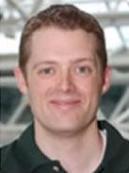 Spring Framework Committer
Spring Framework Committer
Chris Beams is a senior technical staff member at VMware and a core Spring Framework committer. His work in enterprise application development began in 1998 and has covered a wide range of technologies, languages and frameworks. Prior to becoming a full-time Spring committer, Chris trained hundreds of students on the topics of enterprise architecture and how best to use the Spring family of projects. He is a frequent speaker at conferences around the world and is @cbeams at Twitter and GitHub.


 Staff Solutions Architect, VMware
Staff Solutions Architect, VMware
Emad Benjamin has been in the IT industry for the past twenty years. He graduated with a Bachelor of Electrical Engineering from the University of Wollongong. Earlier in his career, he was a C++ software engineer, then in 1997, he switched to programming with Java, and has been focusing on Java ever since. For the past seven years, his focus has been Java on VMware vSphere, vFabric GemFire and SQLFire. Emad has been at VMware since 2005, and is the author of the Enterprise Java Applications Architecture on VMware book. Emad has previously presented at VMworld, SpringOne, and Open World on the subject of Java virtualization.


 Senior Software Engineer, Red Hat
Senior Software Engineer, Red Hat
Marius Bogoevici is a Senior Software Engineer with Red Hat, leading the Spring integration efforts for JBoss AS and other JBoss projects. He is the lead for Snowdrop, a utility package that contains JBoss-specific extensions to the Spring Framework, and also a contributor to Weld, the JSR-299/CDI Reference Implementation and other Java EE-related developer initiatives at JBoss.
Marius Bogoevici has an extensive experience of more than 15 years developing and architecting software systems. Prior to joining Red Hat, he was a Spring consultant with SpringSource. He is a contributor to the Spring Integration enterprise integration framework and co-author of “Spring Integration in Action”.


 Senior Software Engineer, VMware
Senior Software Engineer, VMware
Currently a Senior Software Engineer for SpringSource where he is the Technical Lead and Community Evangelist for the Spring.NET Framework, Stephen brings his varied 18-year-plus experience in software and technology to the design and delivery of Software Engineering Solutions and Frameworks for other Software Engineers. In addition to his work on Spring.NET, Stephen is also an active contributor to several other .NET Open-Source Software projects including NHibernate, NDbUnit, and others as well having developed a number of Visual Studio productivity add-ins.
Active in the software development community, Stephen speaks publicly, blogs (semi-)regularly, and is the author of several popular screencast series focused on Agile and ALT.NET concepts and technologies including the widely-praised 15-part Summer of NHibernate video series introducing viewers to the popular open-source O/RM tool. Stephen is also a founding/organizing member of the NYC ALT.NET user group which meets monthly to discuss Agile-focused techniques and technologies in the world of Microsoft software development and beyond.


 Senior Software Consultant, Swiftmind
Senior Software Consultant, Swiftmind
Sam Brannen is a Senior Software Consultant with over 14 years' experience and co-founder of Swiftmind, a software consulting agency in Zürich, Switzerland. At Swiftmind Sam helps international clients achieve best practices in agile software development, architecture, design, implementation, and testing of enterprise Java applications using the Spring Framework and a plethora of open source technologies. In his consulting role, Sam most enjoys leading work shops, code reviews, coaching, and training clients.
Sam is a popular speaker at conferences on Java, Spring, and OSGi. He is also an active core committer for the Spring Framework, lead author of "Spring in a Nutshell" from O'Reilly, author of the Spring TestContext Framework, and was previously a core developer of SpringSource dm Server (a.k.a., Eclipse Virgo).
Over the years, Sam has helped clients build applications in various business sectors ranging from e-commerce to banking, retail, automotive, and social communities. When not in front of his computer, Sam enjoys traveling and spending time with family and friends.


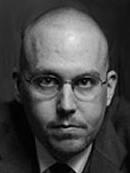 SpringSource R&D
SpringSource R&D
Jon works with the Spring Data, Grails, RabbitMQ, and other teams to provide next-generation data and messaging capabilities for modern Ajax and mobile applications. He's been working with Spring Data to provide mapping capabilities for NoSQL databases like MongoDB and Riak and he's working with RabbitMQ and NoSQL to provide modern evented and message-driven data utilities. He authored the Grails support for Riak as well as contributes Erlang-based utilities for the Riak and RabbitMQ communities.
Prior to SpringSource, Jon developed private cloud architectures at the world's largets Pizza Hut franchisee, developed Lotus Domino, J2EE, PHP and even Perl CGI applications in BBEdit on an aged Mac, and got his start in web-based development 15 years ago, as an intelligence analyst for the US Air Force, when NCSA Mosaic 1.0 was cool.



Ed is an open source software engineer with SpringSource, a division of VMware, where he regularly works with both Java and JavaScript, often at the same time. Ed joined VMware through the acquisition of WaveMaker Software, where he led numerous efforts including the founding of the developer community. Ed has been mixing new technologies with enterprise software and developer services for over 15 years.


 Front-End Engineer and Open Source Fanatic
Front-End Engineer and Open Source Fanatic
Brian is a server-side Java guy turned front-end engineer, and open source fanatic. From collaborative aircraft maintenance systems for the US Navy, to Computer Assisted Surgery systems for Orthopedic surgery, to a global-scale content curation and personalization system, he loves building things that users love to use. He works at VMware on making the web more awesome, and is co-lead of the cujo.js architecture unframework (cujojs.com), a lover of Siberian huskies, family, and things with two wheels.
More about Brian: https://github.com/briancavalier http://blog.briancavalier.com/ http://www.slideshare.net/briancavalier http://lanyrd.com/profile/briancavalier/


 Senior Software Engineer at VMware
Senior Software Engineer at VMware
Roy Clarkson studied computer science at Georgia Tech before beginning his career as a software engineer. He has worked as a professional software developer for over fifteen years, with a variety of languages and technologies. He is currently working as an engineer with SpringSource, at VMware, where he is the lead on the Spring for Android project. He also participates on the Greenhouse project, and built it’s associated mobile clients. Roy has spent the last few years focusing on mobile application development, including iPhone, Android, and mobile web. Prior to that, he focused most of his time on web based application development.


 Staff Engineer with SpringSource
Staff Engineer with SpringSource
Andy Clement is a staff engineer in the SpringSource division of VMware, based in the languages and tools lab in Vancouver. He has more than ten years experience in Enterprise Application Development and now spends his time building tools for languages like AspectJ, Groovy and JavaScript and frameworks like Grails. He currently oversees the Groovy Grails Tool Suite deliverable, a variant of the Spring Tool Suite with a focus on Groovy and Grails.


 CTO of SpringSource
CTO of SpringSource
Adrian Colyer is Chief Technology Officer (CTO) for SpringSource and the
vFabric Cloud Application Platform at VMware
SpringSource develops the Spring Framework and associated open source
projects such as Spring Integration and Spring Batch, Grails, Groovy, and
Eclipse AspectJ. Cloud Foundry is VMware's open platform-as-a-service with
full support for Spring, Grails, and a wide range of other application
frameworks. Adrian maintains a keen interest in the evolution of
enterprise application development as cloud, big data, and smart clients
all appear on the enterprise radar.
Adrian joined VMware in 2009 through VMware's acquisition of SpringSource
where he was the CTO. He led the AspectJ project at Eclipse.org and
oversaw the integration of aspect-oriented concepts into the Spring
Framework. He helped to grow the SpringSource portfolio from these two
projects into the rich set of projects and products that it is today.
In 2004 Adrian was recognised by MIT Technology Review as one of the top
100 young innovators in the world. Adrian has also served on a number of
industry groups including the Aspect-Oriented Software Association
Steering Committee, the OSGi Enterprise Expert Group, and the Eclipse
Architecture Council. Prior to joining SpringSource, Adrian gained over a
decade of experience in building enterprise middleware at IBM.


 Staff Engineer in Java Performance
Staff Engineer in Java Performance
Ben Corrie has been working on Java since 1998, where he began at IBM testing JDK 1.1.4. He progressed to working on the internals of IBM's Java Virtual Machine where he lead a project to develop industry-leading memory management technology for the JVM. He joined SpringSource as a consultant in 2008 and moved to California a year later to lead an effort to improve Java performance on vSphere. As the tech lead on the recently announced EM4J project, he is successfully helping to make vSphere the best place to run Java.


 Senior Java Developer at Dealer.com
Senior Java Developer at Dealer.com
Ellery Crane is a seasoned software developer at Dealer.com, an industry leading automotive software solutions provider. He has been developing Spring applications professionally for six years, and Grails applications for the last three. At Dealer.com, Ellery pioneered the adoption of Grails as a framework for the company's internal applications and has spent the last two years as a lead designer and developer of an enterprise CRM system built primarily upon Groovy, Grails, Spring Integration, and MongoDB.
In his (scant) free time, Ellery is also avid researcher with numerous publications in the field of Evolutionary Computation. He also enjoys exploring the cutting edge in developer tools and technology, and has a passion for automated testing; he recently published an article on using Geb (a Groovy browser automation tool) for functional testing.
Born in Minnesota, Ellery now lives in Burlington, Vermont.


 Developer Evangelist, Splunk
Developer Evangelist, Splunk
Damien is the first Developer Evangelist at Splunk where he engages with the developer community to build big data applications on top of Splunk using Splunk's SDKs and Application framework. A fervent JVM fan, he has a particular interest in the new breed of alternate JVM languages and actually thinks that logging is cool. Prior to joining Splunk, Damien paid his mortgage wearing many different technical hats coding,hacking,engineering and architecting software and solutions around the globe in a variety of industries, primarily in the Enterprise Java space. He is a fanatical All Black's rugby supporter, loves scuba diving and golf and can hold his own on guitar in a blues jam.


 Consulting Architect, VMware
Consulting Architect, VMware
Manny is a GemFire consultant for VMware's vFabric Cloud Application Platform. He brings with him over 18 years of software engineering experience in sectors such as finance, federal, pharma, and technology. His focus is on the server-side, but he also has experience in Java Swing rich client and Web development. He left the world of Smalltalk development when he plunged into the Java world in 1996, and hasn't looked back since. Manny started working with GemFire after joining Gemstone Systems as an Enterprise Architect in London in 2006, based on his prior experience in Coherence technology. He later joined VMware in early 2011, continuing to build on his expertise in designing GemFire-based solutions for applications that require in-memory persistence and distributed grid compute technology.


 CTO and Co-Founder of Incept5
CTO and Co-Founder of Incept5
John Davies is co-founder and CTO of Incept5. Incept5 have been intimately involved in implementing Visa's new capabilities and initiatives around the payments world. John's past includes global chief architect at JP Morgan and BNP Paribas, co-founder and CTO of C24 later sold to Iona and then Progress Software where he was technical director. John specialises in high performance, low latency enterprise architectures, Incept5 have products ranging form top selling iPhone/iPad apps to a high performance matching and reconciliation engine and consult to a number of large clients on IT strategy. John has co-authored several enterprise Java and architecture books and is a frequent speaker at banking and technology conferences.


 Staff Engineer, VMware
Staff Engineer, VMware
Brian Dussault is a Staff Engineer with the vFabric division of VMware and has 14+ years of experience in software engineering. Throughout his tenure, he has worked in both IT (High Tech Manufacturing, Financial Industries) and R&D positions. His experience spans multiple disciplines including web applications, integration, SOA, open source, and system design.


 CEO, Neo4J Technologies
CEO, Neo4J Technologies
Emil Eifrem is CEO of Neo Technology and co-founder of the Neo4j project. Before founding Neo, he was the CTO of Windh AB, where he headed the development of highly complex information architectures for Enterprise Content Management Systems. Committed to sustainable open source, he guides Neo along a balanced path between free availability and commercial reliability. Emil is a frequent conference speaker and author on NOSQL databases.


 Head of Development at C24
Head of Development at C24
Andrew Elmore is Head of Development at C24, a provider of financial services messaging software to many of the world's largest financial institutions. Prior to joining C24, Andrew built and managed the front & middle office systems at a Mastercard-owned credit card issuer & processor, led the development of numerous products at SmartStream Technologies and worked on a number of highly scalable systems including PitneyBowes' Portrait suite & British Telecom's call-routing software.
Andrew is a Chartered Engineer & Chartered IT Practitioner and holds a BEng in Computer Science & Electronics from the University of Edinburgh, UK.


 Founding Partner, Cloud Nine Partners
Founding Partner, Cloud Nine Partners
My career began with a need to teach and mentor. I found these skills to be invaluable in the field of information technology. I started doing basic cabling and network infrastructure although I always had a propensity for coding and software architecture. My specialty in information technology is the integration of multiple technologies to assemble them into business applications with a keen focus on open source frameworks and products. I have consulted for some of the largest corporations in the world with my primary focus in the last 7 years around cloud computing.


 Spring Integration Lead
Spring Integration Lead
Mark Fisher is an engineer within the SpringSource division of VMware and lead of the Spring Integration project. He is also a committer on the core Spring Framework and the Spring BlazeDS Integration project. Mark has provided consulting services for clients across numerous industries, and he has trained hundreds of developers how to use the Spring Framework and related projects effectively. Mark speaks regularly at conferences and user groups in America and Europe.


 Sr Systems Engineer, SpringSource Specialist
Sr Systems Engineer, SpringSource Specialist
Jonathan Fullam has over 12 years of experience with software development with a heavy focus on enterprise Java based applications and open source frameworks. Currently employed by SpringSource, a division of VMware, Jonathan advises enterprises on building scalable architectures using modern technologies and tools. With a passion for public speaking, he most recently presented Test Driven Developement at the 2011 Java Server Side Symposium. Jonathan received his education from The College of New Jersey where he obtained a B.S. in computer science.


 Senior Software Engineer, VMware
Senior Software Engineer, VMware
Talya Gendler is a senior software engineer for the Spring Insight team. She joined Spring Insight in November 2011, and has been at VMware since May 2009. Prior to joining Insight she led the UI team of VMware vFabric AppInsight for two years. She has over 8 years of experience and holds a BSc, Computer Science from The Technion - Israel Institute of Technology (cum laude).


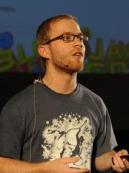 Engineer at SpringSource
Engineer at SpringSource
Oliver Gierke is engineer at SpringSource, a division of VMware, project lead of the Spring Data JPA module and involved into other Spring Data modules (e.g. MongoDB) as well. He has been into developing enterprise applications and open source projects for over 6 years now. His working focus is centered around software architecture, Spring and persistence technologies. He is regularly speaking at German and international conferences as well as author of technology articles.


 Spring Insight team member
Spring Insight team member
A Java veteran with over 23 years of experience in software development. Obtained M.Sc. in Computer Science from the Technion – Haifa Institute of Technology, followed a 6+ years term with the IDF involved in high-tech projects. After retiring from the army, continued in the private sector being involved in various projects and diverse technologies and architectures - e.g., telephony, VoIP, unified messaging, etc.. Has been a member of the Spring Insight team since May 2010 when he joined VMware. Initial developer of the Spring Insight bootstrap solution for Tomcat 5/6/7, JBoss 5.0/5.1/6.0, and POC for WebLogic and WebSphere, as well as developer of considerable number of Insight collection plugins


 Senior Software Engineer, SpringSource
Senior Software Engineer, SpringSource
Jeremy Grelle is an open source software engineer with SpringSource, a division of VMware, who specializes in bringing the cutting-edge techniques of web application development to the Java and Spring ecosystems. He is the creator of the Spring JavaScript, Spring Faces, and Spring BlazeDS Integration projects, and he represented SpringSource on the JSR-314 Expert Group for JSF 2.0. He is a software artisan with extensive experience in combining server-side Java with the latest web browser technologies to deliver a rich and usable experience for the end user on the web.
Jeremy is a frequent speaker at industry conferences such as JavaOne, The Spring Experience, SpringOne, JSFOne, TheServerSide Java Symposium, and Java and Flex user group events, and always enjoys getting out and showing his fellow developers how to bend web browsers to their will and the possibilities of what can be created with Spring and its wealth of complimentary web technologies.


 dm Server Team Core Developer
dm Server Team Core Developer
Ben Hale is a senior software engineer with Springsource and a core developer on the SpringSource dm Server project. Ben specializes in middleware development with using technologies such as OSGi and Aspect Oriented Programming as well as directing the build and release processes for all products in the Spring and SpringSource portfolios.
His interests include middle-tier architecture and effective build and release management strategies.
Prior to joining SpringSource, Ben spent several years leading teams in architecture and development of large-scale enterprise management applications for the telecommunications industry.


 Sr. Software Engineer with VMWare
Sr. Software Engineer with VMWare
John has been pushing the limits of the web since 1996 and has been totally engulfed in Javascript, HTML, and CSS since 2004. Of the 70+ enterprise-scale apps he's led, notable achievements include Ajax-ish and JSON-RPC-like browser apps way back in 1999 (US Patent 7,016,751), composable Javascript constructors for creating draggable modal dialogs in 2004, and a Javascript non-preemptive multi-tasking framework in 2007. When he's not working on his “top secret” project at VMWare or his latest side-project with his kids, John is sure to be coding tenaciously on the next generation of Javascript libraries at http://cujojs.github.com.
More about John: http://unscriptable.com/


 European Solution Architect at 10gen
European Solution Architect at 10gen
Chris Harris is a European Solution Architect at 10gen. Prior to 10gen, Chris was EMEA Architect at SpringSource responsible for evangelising vFabric products and defining architectural solutions for customers across EMEA. With the acquisition of SpringSource by VMware, Chris focused on how virtualization and cloud computing can be used to address the complexity within the Enterprise. Before joining SpringSource, Chris spent his time at RedHat/JBoss providing consultancy to major clients across EMEA.


 Director R&D - Tools
Director R&D - Tools
Derek Henninger is the director of R&D for the SpringSource tools, including STS, Roo, and WaveMaker. Derek joined VMware through the acquisition of WaveMaker Software. At WaveMaker Derek led the development and definition of the WaveMaker Studio development product. Derek has over 20 years of experience in development tools, including Progress Software, Persistence Software, and Metaphor.


 Senior Software Engineer at SpringSource
Senior Software Engineer at SpringSource
Jennifer Hickey is a Sr. Software Engineer with SpringSource/VMware, with over a decade of experience in software engineering. Jennifer is a member of the Cloud Foundry team, specializing in developer experience and support of frameworks such as Spring, Grails, Rails, and Sinatra. She is passionate about increasing developer productivity in the cloud. Jennifer has led or contributed to a number of SpringSource projects, including Hyperic and tc Server. She has been involved in converting multiple large EJB/legacy codebases to Spring. Prior to joining SpringSource, Jennifer was a principal architect of a large-scale network management system.


 MTS @ SpringSource/VMware; Spring Integration Team
MTS @ SpringSource/VMware; Spring Integration Team
Gunnar Hillert is a member of technical staff (MTS) at SpringSource, a division of VMware, Inc. He is a committer for Spring Integration, Spring AMQP and also contributes to the Cloud Foundry project. Gunnar heads the Atlanta Java Users Group and is an organizer for the DevNexus developer conference.
A native from Berlin, Germany, Gunnar has been calling Atlanta home for the past 11 years. He is an avid gardener specializing in anything sub-tropical such as bananas, palm trees and bamboo. As time permits, Gunnar works on his Spanish language skills and he and his wife Alysa are raising their two children tri-lingually (English, German, Spanish). Gunnar blogs at: http://blog.hillert.com/ and you can follow him on Twitter: https://twitter.com/ghillert


 Spring Framework co-founder and project lead
Spring Framework co-founder and project lead
Juergen Hoeller is co-founder of the Spring Framework open source project and has been serving as the project lead and release manager for the core framework since 2003. Juergen is an experienced software architect and consultant with outstanding expertise in code organization, transaction management and enterprise messaging.


 Staff System Engineer @ VMware
Staff System Engineer @ VMware
Mark Johnson is a Staff System Engineer at VMware where he focuses on helping people learn more about SpringSource technologies and they can aid enterprise applications.
Mark has worked on a wide range of technology during his career. Most recently he has focused on Groovy, Grails, and Scala as technologies which enable high quality applications quickly.
Mark is active in the software community as the President of the New England Java Users Group (NEJUG) and a regular presenter to user groups and various conferenes. When not working, Mark can be found riding his mountain bike on local trails and playing with his family


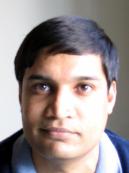 Author of AspectJ in Action, Principal at SpringSource
Author of AspectJ in Action, Principal at SpringSource
Ramnivas Laddad is a SpringSource Principal Enginner. He has over a decade of experience in applying his enterprise Java and aspect-oriented programming (AOP) expertise to middleware, design automation, networking, web application, user interface, and security projects.
Ramnivas Laddad is a well-known expert in enterprise Java, especially in the area of AOP and Spring. He is the author of AspectJ in Action, the best-selling book on AOP and AspectJ that has been lauded by industry experts for its presentation of practical and innovative AOP applications to solve real-world problems. Ramnivas, a Spring framework committer, is also an active presenter at leading industry events such as JavaOne, JavaPolis, No Fluff Just Stuff, SpringOne, Software Development, and has been an active member of both the AspectJ and Spring communities from their beginnings.


 Lead, Spring GemFire, Hadoop, Redis
Lead, Spring GemFire, Hadoop, Redis
Costin Leau is an engineer within the SpringSource. His interests include data access and aspect oriented programming. With significant development experience, Costin has worked on various Spring Framework features (cache abstraction, JPA, java config), led the Spring Dynamic Modules (Spring OSGi probject), Spring GemFire and the Spring-inspired, OSGi 4.2 Blueprint Service RI. Currently Costin is working in the NOSQL and Big Data area, leading the Spring integration with Hadoop and Redis.


 Lead, SpringSource Tool Suite and Spring IDE
Lead, SpringSource Tool Suite and Spring IDE
Martin leads the team of the SpringSource Tool Suite and the Spring IDE and works together with the tools team on providing the best developer tools out there for Spring and Cloud Foundry. Before joining SpringSource/VMware, Martin founded (together with colleagues) it-agile, a leading consulting and development company focused on agile software development, and worked many years as consultant and coach for agile software development and flexible and modularized architectures. He is author of papers, articles, and books on various topics including agile software development, Eclipse technology and refactoring techniques.


 Developer Advocate
Developer Advocate
Josh Long is the Spring developer advocate. Josh is the lead author on Apress’ Spring Recipes, 2nd Edition, and a SpringSource committer and contributor. When he's not hacking on code, he can be found at the local Java User Group or at the local coffee shop. Josh likes solutions that push the boundaries of the technologies that enable them. His interests include scalability, BPM, grid processing, mobile computing and so-called "smart" systems. He blogs at blog.springsource.org or joshlong.com.


 One of the original creators of Spring Batch, vFabric Senior Systems Engineer
One of the original creators of Spring Batch, vFabric Senior Systems Engineer
Wayne Lund is a Senior Systems Engineer within VMware vFabric. Currently Wayne is on the Java Batch expert group (JSR-352) working to standardize the use of Java Batch in the enterprise, which has just been released for public review. Prior to coming to VMware Wayne has been working as an enterprise Java Architect from the earliest days of Java. While at Accenture he was one of the Chief Architects of Spring Batch, a joint effort between Accenture and SpringSource, and introduced the Java Community to Spring Batch at Java One 2007 along with Rod Johnson and Scott Wintermute.


 Co-author of "Pro Spring"
Co-author of "Pro Spring"
Jan is an enthusiastic Java and Scala programmer with a long history of large and successful systems.
Jan has used the Spring Framework from its earliest versions and then shared his experience with the framework itself and with writing elegant Spring code in Pro Spring and Pro Spring 2.5; he is an expert in most projects in the Spring Portfolio.
Alongside the Spring Framework and Java, Jan has extensive experience in functional and strongly typed programming in Scala. He is the author of Specs2 Spring and Akka Patterns projects which aim to give boost to Java programmers who want to try out Scala.
Jan also shares his expertise and passion for software as the chief editor of the Open Source Journal


 Solution Engineer, Hortonworks
Solution Engineer, Hortonworks
Tom McCuch is a Solution Engineer for Hortonworks with over twenty two years of experience in software engineering. Tom specializes in the architecture, implementation, and deployment of distributed systems requiring high Reliability, Availability, and Scalability (RAS) features. Prior to Hortonworks, Tom worked for SpringSource - handling field architecture for their global accounts including Financial Services, Transportation, and Energy. Tom has consulted enterprise clients across multiple industries in the architecture of mission-critical solutions based on open source software as well as led the engineering of enterprise Java middleware supporting next-generation telecommunications products deployed at tier-1 telcos both in the U.S. and Europe.


 Data Scientist
Data Scientist
Data Scientist @ http://ConcurrentInc.com. Developer Evangelist for http://Cascading.org open source project. Expert in Hadoop, R, cloud computing, machine learning, predictive analytics, NLP. BS MathSci and CS CompSci from Stanford, 25+ yrs in tech industry. For the past several years, I've been leading Data Science teams, working with large scale MapReduce applications.


 Founder Spring.NET
Founder Spring.NET
Dr. Mark Pollack has been a core Spring (Java) developer since 2003 and founded its Microsoft counterpart, Spring.NET, in 2004. Mark now leads the Spring Data project that aims to simplify application development with new data technologies around big data and NoSQL databases. Prior to working on Spring project, Mark worked in offline computing in high-energy nuclear physics at Brookhaven National Laboratory and then moved to the financial services industry as a technical lead for front-office trading systems.


 Founder & Project Lead for Spring Web Services
Founder & Project Lead for Spring Web Services
Arjen Poutsma is a Staff Engineer at SpringSource (a division of VMware) with more than fifteen years' experience in commercial software environments. During this time he has worked with both Java EE and Microsoft .NET.
In 2004, Arjen started to specialise in Web Services and Service Oriented Architectures. During this period he has conducted trainings and has researched SOAs in large organisations.
Arjen is the founder and the project lead for the Spring Web Services. This Spring project aims at facilitating development of document-driven web services. Recently, Arjen worked on the REST support in Spring 3.0 and 3.1.


 Chief Architect, GemFire Data Grid products
Chief Architect, GemFire Data Grid products
As the Chief Architect for GemFire product line, Jags is responsible for the technology direction for its high performance distributed data Grid and virtualization platform. Jags has represented GemStone Systems in the EJB expert group and the J2EE platform specification. In the past, Jags represented BEA in the W3C SOAP protocol specification, JAXM and other standards. Jags has presented in several conferences in the past on Data management, clustering and grid computing(Javaone, W3C workshop, Java user groups, Open Grid Forum, Platform Grid conference etc) . He has over 20 years of experience, a bachelors degree in computer science and a masters degree in management of science and technology.


 Author of "Scala in Action"
Author of "Scala in Action"
Nilanjan is a consultant and trainer for Typesafe. He started his professional career as a software developer in 2000 using object oriented programming languages. Nilanjan has previously worked with IBM, ThoughtWorks and LivingSocial where he gained a lot of experience in managing and developing software solutions in Java/JEE, Ruby, Groovy and also in Scala. He is zealous about programming in Scala ever since he got introduced to this beautiful language. Currently he spends his spare time working on the scala-webmachine open source project (restful resource framework). In the past Nilanjan worked on other open source projects and libraries. At Typesafe he is mainly teaching and designing Scala and Play courses and helping customers to adopt these technologies. Nilanjan enjoys sharing his experience via talks at various conferences. He is also the author of the "Scala in Action" book.


 Author of POJOs in Action
Author of POJOs in Action
Chris Richardson is a developer and architect with over 20 years of experience. He is a Java Champion and the author of POJOs in Action, which describes how to build enterprise Java applications with POJOs and frameworks such as Spring and Hibernate. Chris is the founder of CloudFoundry.com and works on cloud technology. He has a computer science degree from the University of Cambridge in England and lives in Oakland, CA with his wife and three children.


 Co-author Spring Roo in Action
Co-author Spring Roo in Action
Co-author with Srini Penchikala of Spring Roo in Action, and long time SpringSource technology consultant at Chariot Solutions. I led the charge for Chariot to become a SpringSource/VMware training provider, as we have been working with Spring as an consulting partner since the Interface21 days.
I teach courses in Spring Maven and the Nexus repository manager, as well in other technologies. In my spare time, I run the Chariot TechCast podcast, which is in its 5th year online, and help to organize the Philadelphia Emerging Technologies for the Enterprise conference each year. I blog about Roo, Grails, Groovy and Spring at rimple.com and also have written articles that have appeared at DZone and Oracle's Java.NET blog.


 Staff Engineer, SpringSource; Spring Integration Team
Staff Engineer, SpringSource; Spring Integration Team
Gary has been in software engineering, concentrating on Enterprise Integration, for over 30 years on various platforms, and in the Java space since the late '90s.
He has been developing with the Spring Framework since 2004 and joined SpringSource/VMware in 2009 in a consulting role. From 2009 until the end of 2011 he taught Core Spring and Enterprise Integration with Spring to several hundred developers, as well as providing Enterprise Integration consulting services with Spring Integration, Spring Batch and Core Spring.
He has been a committer on the Spring Integration project for nearly 3 years and became a full time member of the engineering team in January 2012.


 Mark teaches many classes for SpringSource as a contract trainer
Mark teaches many classes for SpringSource as a contract trainer
Mark is the owner of Perfect World Programming a training and consulting company. 99% of Mark's work is done through SpringSource teaching Spring's Core Spring, Spring with Hibernate and Enterprise Integration with Spring.
Mark has over 20 years software development for many businesses and industries specializing in middle tier and backend development. As a former DBA and Architect Mark focuses on data driven applications that are both performant and robust.
Mark can also be found at www.javaranch.com answering questions in the Spring Framework forum. He was also part of the SCJP 5.0 exam creation team and technical editor for a few books.


 Senior Staff Engineer, VMware
Senior Staff Engineer, VMware
Rossen is a Spring Framework developer focusing on Spring MVC as well as Spring Web Flow. His 17+ year background includes work on trading and risk management software, investment accounting, e-commerce web applications, directory services, among others. Prior to becoming a full-time Spring Framework developer, Rossen spent several years teaching and consulting clients building enterprise Java applications with Spring on a broad range of topics.


 Senior Software Engineer, Typesafe
Senior Software Engineer, Typesafe
Josh Suereth is a Senior Software Engineer at Typesafe and the author of "Scala In Depth.” He has been a Scala enthusiast ever since he came to know this beautiful language in 2007. He started his professional career as a software developer in 2004, cutting his teeth with C++, STL, and Boost. Around the same time, Java fever was spreading and his interest was migrating to web-hosted distributed Java-delivered solutions to aide health departments discover the outbreaks of disease - everything from EJB to Hibernate/Spring and even some Applets. He introduced Scala into his company code base first in 2007, and soon after he was infected by Scala fever, contributing to the Scala IDE, maven-Scala-plugin, and Scala itself. In 2009, he began writing the book "Scala In Depth" which provides practical support for using Scala in everyday applications. Today, Josh is the author of several open source Scala projects, including the Scala automated resource management library, the PGP sbt plugin, as well as contributing to key components in the Scala ecosystem, like the maven-Scala-plugin. His current work at Typesafe Inc. has him doing anything from building MSIs to profiling performance issues. Josh regularly shares his expertise in articles and talks.


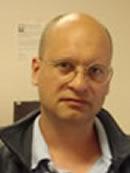 Lead of Spring Batch, SpringSource Principal Consultant
Lead of Spring Batch, SpringSource Principal Consultant
Dr David Syer is the technical lead on Spring Batch, the batch processing framework and toolkit from SpringSource. He is an experienced, delivery-focused architect and development manager. He has designed and built successful enterprise software solutions using Spring, and implemented them in major financial institutions worldwide. David is known for his clear and informative training style and has deep knowledge and experience with all aspects of real-life usage of the Spring framework. He enjoys creating business value from the application of simple principles to enterprise architecture. David joined SpringSource from a leading risk management software vendor where he worked closely with SpringSource on a number of projects. Recent publications have appeared in Balance Sheet, Operational Risk and Derivatives Technology.


 Regional Sr. Systems Engineer , VMware
Regional Sr. Systems Engineer , VMware
Guillermo is an award-winning Enterprise Architecture practitioner with 17+ years of progressive experience in different industries. As a Regional Senior Systems Engineer for VMware's Cloud Application Platform division, Guillermo works with customers to understand their business needs and challenges and helps them seize new opportunities by leveraging vFabric to modernize their IT architecture. Guillermo is passionate about his family, business, technology and soccer.


 CTO & Co-founder, Azul Systems
CTO & Co-founder, Azul Systems
Gil Tene is CTO and co-founder of Azul Systems. He has been involved with virtual machine technologies for the past 20 years and has been building Java technology-based products since 1995. Gil pioneered Azul's Continuously Concurrent Compacting Collector (C4), Java Virtualization, Elastic Memory, and various managed runtime and systems stack technologies that combine to deliver the industry's most scalable and robust Java platforms. In 2006 he was named one of the Top 50 Agenda Setters in the technology industry by Silicon.com. Prior to co-founding Azul, Gil held key technology positions at Nortel Networks, Shasta Networks and at Check Point Software Technologies, where he delivered several industry-leading traffic management solutions including the industry's first Firewall-1 based security appliance. He architected operating systems for Stratus Computer, clustering solutions at Qualix/Legato, and served as an officer in the Israeli Navy Computer R and D unit. Gil holds a BSEE from The Technion Israel Institute of Technology, and has been awarded 28 patents in computer-related technologies.


 Vice President, Broadleaf Commerce
Vice President, Broadleaf Commerce
Kelly is Vice President and senior engineer at Broadleaf Commerce, a company that builds and distributes an open source eCommerce framework built on The Spring Framework. Besides contributing to the features and functions of Broadleaf Commerce, Kelly helps Broadleaf clients to implement, customize, and ultimately realize the full value of Broadleaf Commerce. Prior to joining Broadleaf, Kelly spent 14 years working as a consultant, focusing on application development and system integration using Java based technologies. Kelly is originally from Canada and lives in Austin, Texas.


 Lead - Spring Data GemFire
Lead - Spring Data GemFire
David Turanski is a Senior Software Engineer with SpringSource, a division of VMWare. David is a member of the Spring Data team and lead of the Spring Data GemFire project. He is also a committer on the Spring Integration project. David has extensive experience as a developer, architect and consultant serving a variety of industries. In addition he has trained hundreds of developers how to use the Spring Framework effectively.


 Principal Architect, Consultant - ShiftMethod
Principal Architect, Consultant - ShiftMethod
Vaughn Vernon is a veteran software craftsman with more than 25 years of experience, currently working as an independent consultant. Vaughn is a DDD and distributed systems practitioner, and the author of the book "Implementing Domain-Driven Design" published in 2012 by Addison-Wesley.


 CSSD Solution Architect - CAP, VMware
CSSD Solution Architect - CAP, VMware
Abdul has over 12 years of rich & insightful experience in software solution development. He graduated with a Bachelor of computer science from Bangalore University, India.
He started as a java developer, Has good experience in Object Oriented Analysis and Design along with the design and development of complex, business critical applications using JEE technologies. He has been involved in solution proposals, Solution Design/recommendations, Enterprise Application Integration, Application modernization, Data modernization, OSS/BSS solutions, Cloud adoption for Paas Solutions using vFabric platform. Abdul has been in VMware since March 2012, and has contributed to IP initiatives for vFabric cloud application platform as part of global solutions and service engineering team.


 Author of Spring in Action
Author of Spring in Action
Craig Walls has been professionally developing software for almost 18 years (and longer than that for the pure geekiness of it). He is a senior engineer with SpringSource as the Spring Social project lead and is the author of Spring in Action and XDoclet in Action (both published by Manning) and Modular Java (published by Pragmatic Bookshelf). He's a zealous promoter of the Spring Framework, speaking frequently at local user groups and conferences and writing about Spring and OSGi on his blog. When he's not slinging code, Craig spends as much time as he can with his wife, two daughters, 4 birds and 3 dogs.


 Senior Software Engineer at VMware
Senior Software Engineer at VMware
Phil Webb is developer on the core Spring Framework and Spring Web Flow projects. He is member of the JSR-344 expert group and has been working with Java for over 10 years. Phil is particularly interested in server-side web technologies and has been working to improve integration between Spring and JSF. Born in the UK, Phil is currently living in California.


 Senior Consulting Architect, EMC
Senior Consulting Architect, EMC
Wes Williams is a Senior Consultant with EMC specializing in vFabric technologies and Domain-Driven Design.
He has extensive experience (25+ years) as a hands-on software developer, architect and designer supporting the creation of enterprise-class information technology systems in a wide variety of industries from small businesses to Fortune 10 companies using big, fast data. He is certified with both Microsoft and Java technologies, including certifications with Java architecture and enterprise architecture. He was formerly a guest instructor for Architecture at Sun Microsystems.


 Spring Security Lead, Senior Software Engineer at SpringSource, VMware
Spring Security Lead, Senior Software Engineer at SpringSource, VMware
Rob Winch is currently a Senior Software Engineer at VMware and is the project lead of the Spring Security framework. In the past he has worked as a Software Architect at Cerner, the largest provider of electronic medical systems in the US, securing health care applications. Throughout his career he has developed hands on experience integrating Spring Security with an array of security standards (i.e. LDAP, SAML, CAS, OAuth, etc). Before his focus was security he worked as an independent web contractor, in proteomics research at Loyola University Chicago, and on the Globus Toolkit at Argonne National Laboratory. His interests include web security and identity management, high performance computing, and ALM tooling. When he is not sitting in front of a computer he enjoys participating in a variety of intramural sports and playing guitar.


 Staff Engineer, VMware
Staff Engineer, VMware
David Winterfeldt works at VMware on the VMware vFabric Application Director project. It enables developers and organizations to deploy applications to the cloud by having a logical abstraction for software services and application topologies. This allows an application to be easily deployed multiple times to different environments.
David has been doing software development for over 20 years. He's been using Java since 1998 and involved in using Open Source almost as long. David has focused on Web and Enterprise development for most of his career, and started working with the Spring Framework in 2006.
David runs the website Spring by Example, which is a site for sharing Spring examples. The site is a general resource for Spring and should ultimately save developers time. He's is also an Apache committer on Struts and Commons Validator, as well as the creator of Commons Validator (although currently no longer active on either).


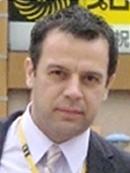 Sr. Software Engineer, Spring Integration team - SpringSource/VMWare
Sr. Software Engineer, Spring Integration team - SpringSource/VMWare
Oleg is a Sr. Software Engineer with SpringSource/VMWare and a core developer of Spring Integration framework. He has 16+ years of experience in software engineering across multiple disciplines including software architecture and design, consulting, business analysis and application development. After starting his career in the world of COBOL & CICS, Oleg has been focusing on professional Java and Java EE development since 1999. Since 2004 he has been heavily involved in using several open source technologies and platforms with Spring Framework at the forefront, while working on a number of projects around the world and spanning industries such as Telecommunication, Banking, Law Enforcement, US DOD and others.
You can regularly spot Oleg on the Spring Forums contributing to a number of topics.
A resident of the Philadelphia area, Oleg enjoys windsurfing, scuba diving, snowboarding, hockey and traveling when he can find some spare time.


- NFJS SITES:
- No Fluff Just Stuff
- Uber Conf
- NFJS One
- SpringOne 2GX
- Rich Web Experience
- Continuous Delivery Experience
- SPRINGSOURCE SITES:
- Springsource.com
- Springsource.org


































































